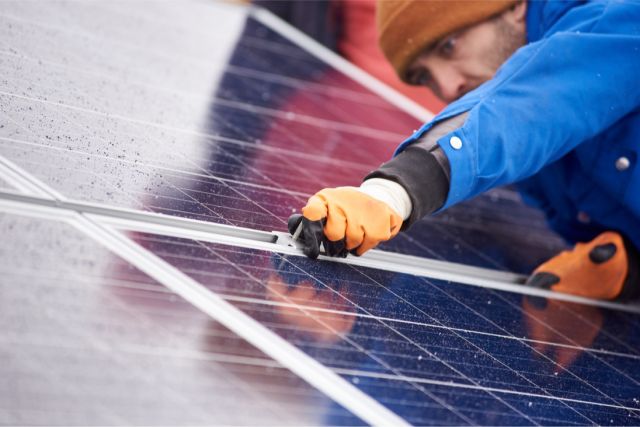
While solar energy has lagged behind other renewable energy sources in the United States, the numbers are forecasting up, according to a recent report released by Wood Mackenzie Power & Renewables and the Solar Energy Industries Association.
The report said that solar installations have doubled in the last three years to 2 million and they are set to double again in four years, hitting 4 million in the U.S. Just three years ago the nation had only 1 million installations.
The forecast for growth comes even with the Trump Administration moving to end Obama Era tax credits for installing solar. But legislation in states to reduce or some cases eliminate carbon reliance has meant a boost for solar installations.
Solar is also cheaper and becoming more competitive with other sources of energy generation, according to the report.
“All of this has had a pretty positive effect on solar to the point that solar now is the cheapest in most places power generation technology,” said Wood MacKenzie senior solar analyst Tom Heggarty.
RELATED VIDEO: HART ENERGY CONNECT: Why Physics Limits Solar, Wind Energy
Wood Mackenzie is forecasting there will be 3 million installations in 2021 and 4 million in 2023. California has been the driver in solar installations in the U.S. and that won’t change anytime soon, but the biggest growth is coming from states such as South Carolina, Texas, Utah, Illinois, Florida, Rhode Island and Maryland.
California had 51% of the solar installations of the first 1 million but that dipped to just 43% of the second million installations. South Carolina, meanwhile, went from being an emerging market in 2016 with 1,160 cumulative installations to more than 18,000 solar systems today and is expected to add 22,000 systems over the next five years, according to the report.
Texas, Utah, Florida, Rhode Island and Maryland have grown from 50,000 installations combined to more than 200,000 over the last three years. While California will continue to lead the U.S. in solar installations, the report forecasts that the remaining Top 10 markets will see faster growth. Illinois is another state that is expected to grow substantially in solar installations, going from 4,000 today to 100,000 by 2024.
The other Top 10 markets are expected to have 750,000 installations in the next five years, after just 500,000 installations over the last five years.
It’s no coincidence that the growth in the U.S. comes as the market for solar installations has experienced substantial global growth. According to Wood Mackenzie, in 2017 there was 98 to 100 gigawatts of solar installed worldwide.
“That’s exponential growth from even three or four years ago when we were much lower in terms of our installations,” Heggarty said. “Generally the market has shown very significant growth over the last 10 years. To a large degree we expect that to continue.”
Recommended Reading
Gunvor Group Inks Purchase Agreement with Texas LNG Brownsville
2024-03-19 - The agreement with Texas LNG Brownsville calls for a 20-year free on-board sale and purchase agreement of 0.5 million tonnes per annum of LNG for a Gunvor Group subsidiary.
US Expected to Supply 30% of LNG Demand by 2030
2024-02-23 - Shell expects the U.S. to meet around 30% of total global LNG demand by 2030, although reliance on four key basins could create midstream constraints, the energy giant revealed in its “Shell LNG Outlook 2024.”
Venture Global, Grain LNG Ink Deal to Provide LNG to UK
2024-02-05 - Under the agreement, Venture Global will have the ability to access 3 million tonnes per annum of LNG storage and regasification capacity at the Isle of Grain LNG terminal.
Asia Spot LNG at 3-month Peak on Steady Demand, Supply Disruption
2024-04-12 - Heating demand in Europe and production disruption at the Freeport LNG terminal in the U.S. pushed up prices, said Samuel Good, head of LNG pricing at commodity pricing agency Argus.
CERAWeek: JERA CEO Touts Importance of US LNG Supply
2024-03-22 - JERA Co. Global CEO Yukio Kani said during CERAWeek by S&P Global that it was important to have a portfolio of diversified LNG supply sources, especially from the U.S.




